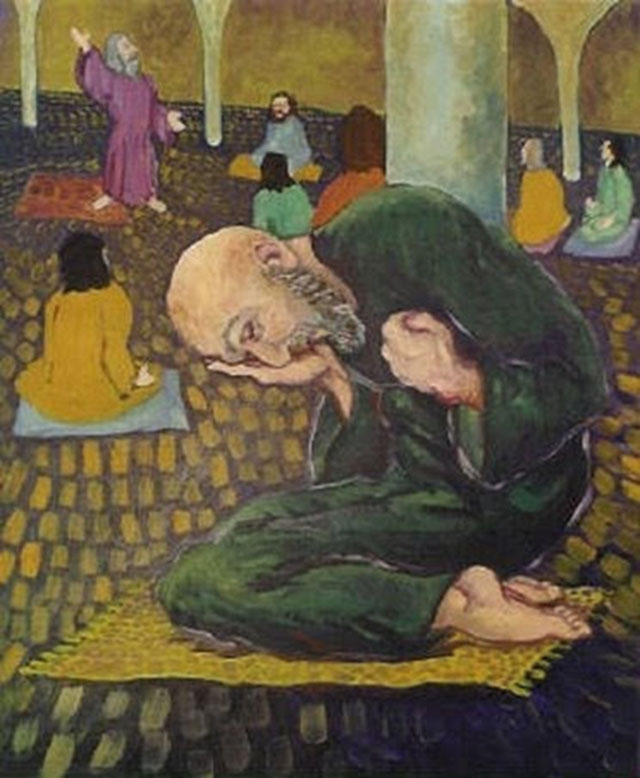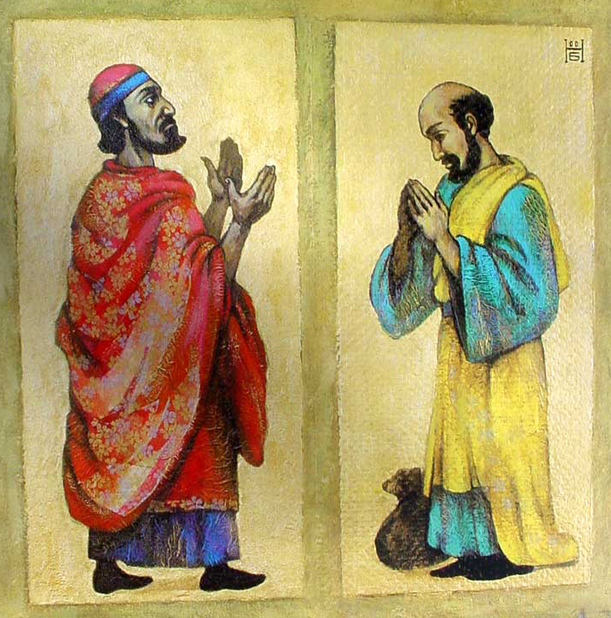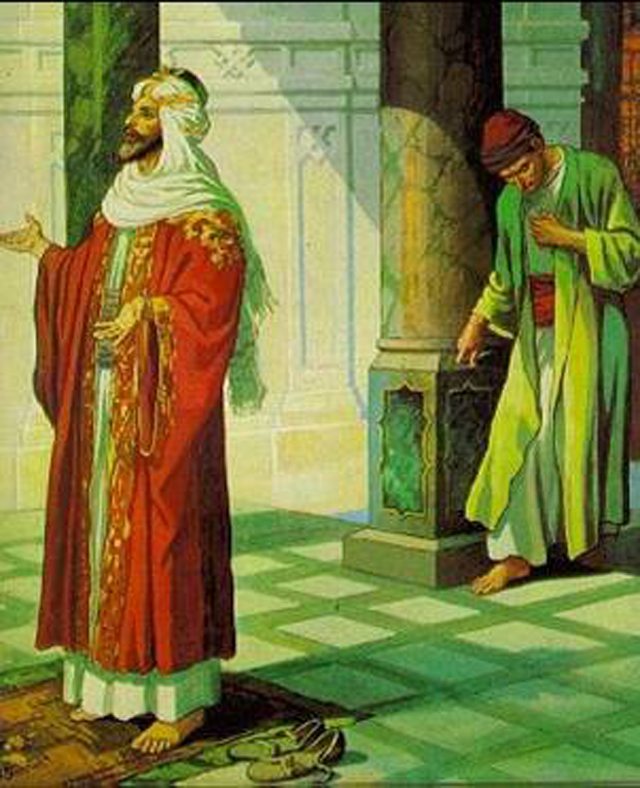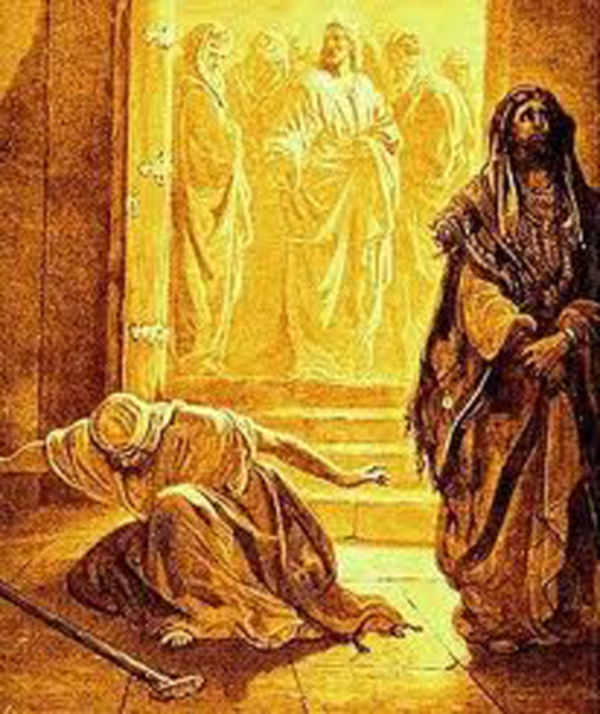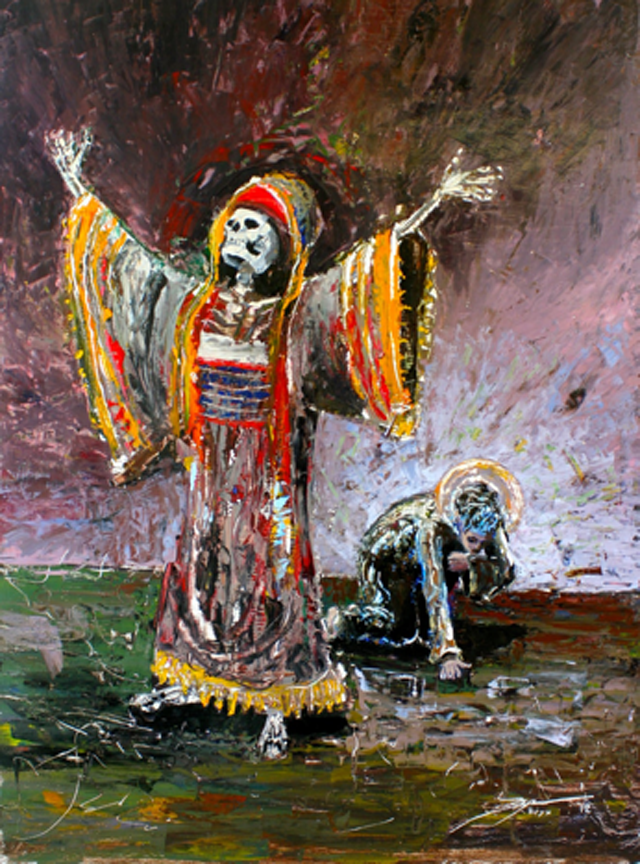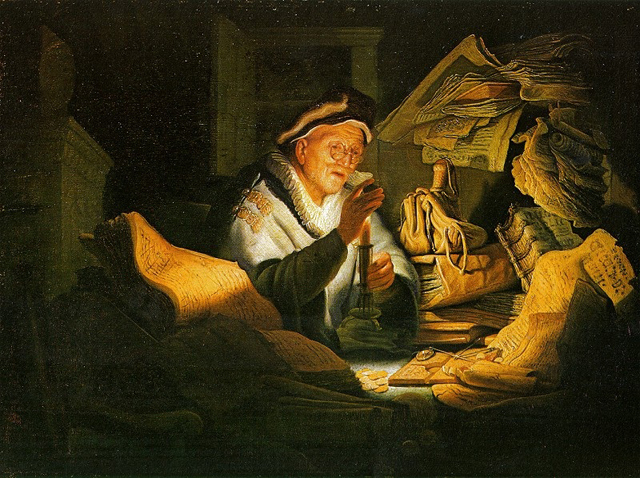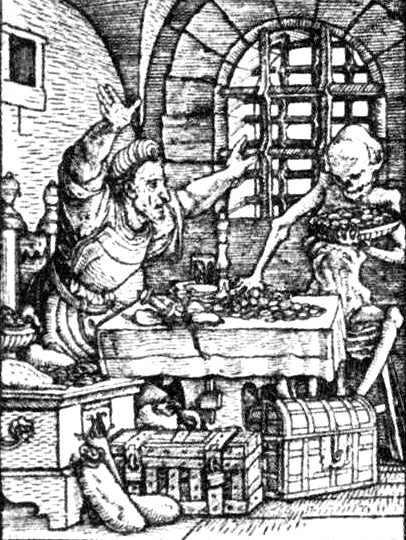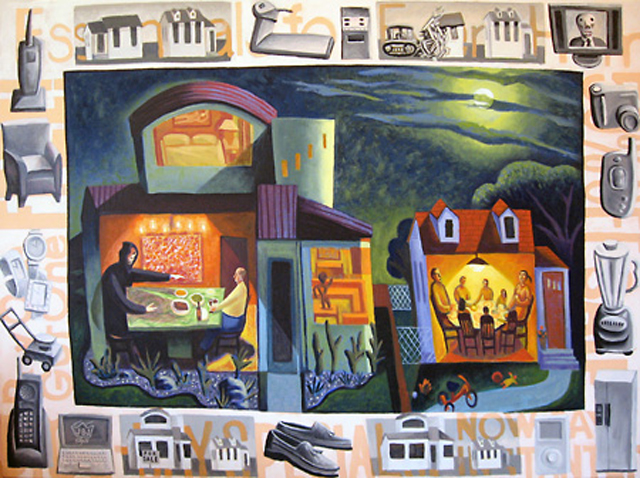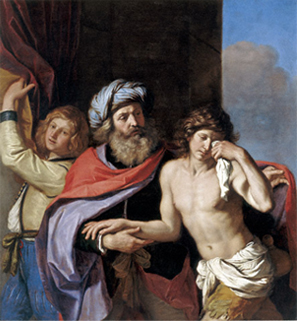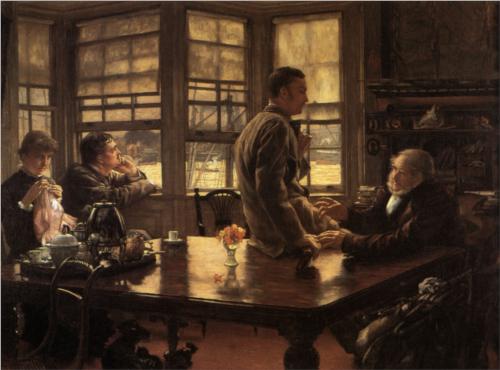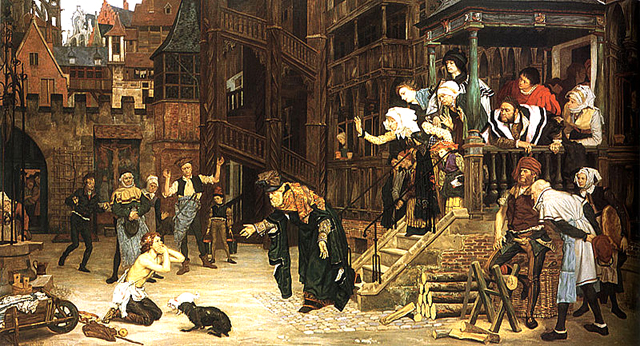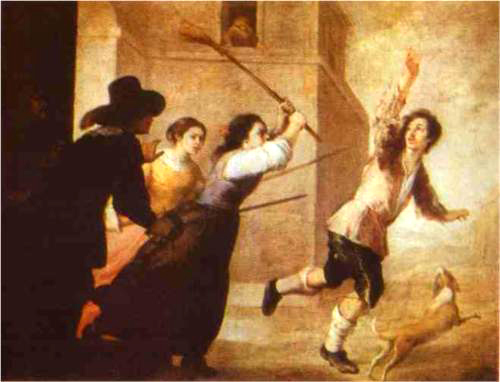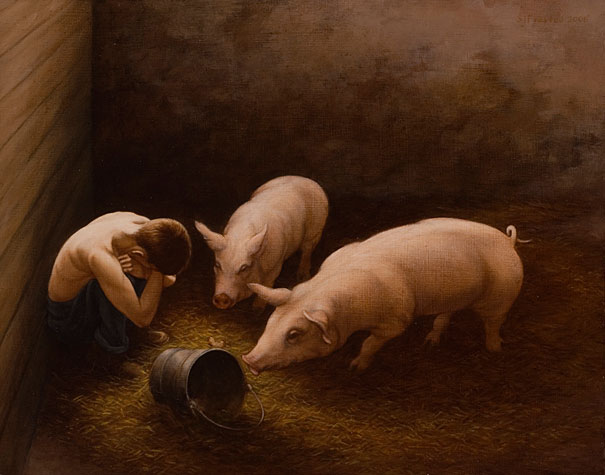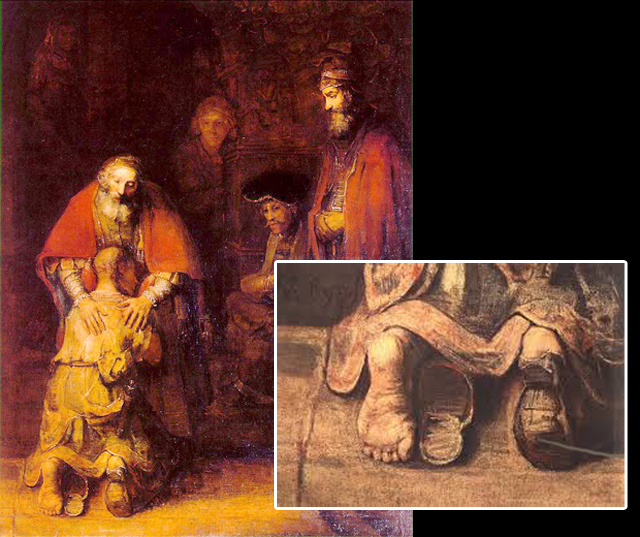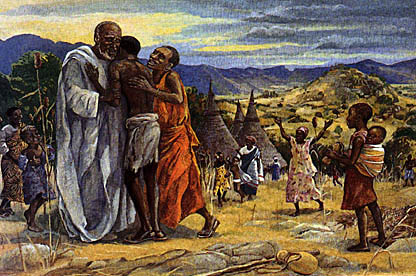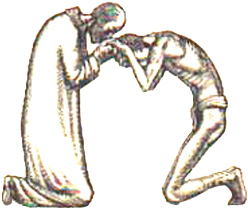6 Depictions of the Pharisee
and the Publican or Tax Collector
Jesus’ story is a study in contrast. Each of us can probably relate to the story. We may see ourselves as the tax collector even when our actions mimic the Pharisee.
The Pharisee is sure of himself. He is a good man. He has no reason to question his place within the faith. He has followed the law. He does what is expected of him. And he’s thankful for his lot in life. Doesn’t that describe most happy church people?
But the focus is on the little guy—the guy the better people in society look down on. The tax collector is hated. The tax collector is cozy with society’s enemies. The tax collector makes his living at the expense of good Jewish people.
That describes an awful lot of church people, too! It just takes a story from Jesus now and then to set us straight.
And so artists through the ages have visited this story over and over. Let’s start with the iconic portrayal typical of Eastern or Orthodox Christianity.
Icons are painted with meditation in mind. There is enough in this depiction to think about. The relationship of both the Pharisee and the Publican to Judaism is prominent. The artist depicts both men as equal for the purposes of mediation. They are of equal size and position.
Contrast this depiction with another work which is similar in detail but which clearly focuses on the tax collector. Don’t you want to put your hand on his shoulder?
In the next depiction the Pharisee and Publican go head to head. Separate but equal.
Here is another storytelling approach.
The next artist won’t let us forget that this is a story. Jesus is present in the background. His audience is there. The foreground is a stage for his story. The poor tax collector! He even needs a cane to walk!
Last, we show you a modern depiction by artist Bryn Gillette. This contemporary artist painted this rendition in response to a sermon he heard. He tells his story on his website.
The sermon had contrasted the spiritually dead, hypocritical, and self righteous attitude of the pharisee with the persevering faith, obedience, and selfless stewardship of a true disciple of Jesus.
I tried to paint this familiar scene from the more shocking spiritual lens of what was happening within the two figures: the pharisee’s self righteous posture emanating darkness, spiritually dead but covered by a veneer of beautiful color, while the tax collector is contrite in posture, full of life, covered in humble earth tones, and shimmering with God’s anointing. —Bryn Gillette
And so the pharisee is a skeleton and the publican has a halo!
It’s great when the artist is still around to help us understand his work!
Here’s an idea. Paint or draw your response to next week’s sermon!


